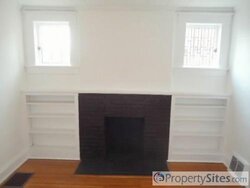I have a 1500 sq ft two story home with a basement. Right now we are heating with forced air oil. I have been bitten by the wood-burning bug. The cost of oil doesn't help. I am trying to decide between a stove in the basement or an insert on our first floor. Apparently it is ok to pipe heat from a stove into a central air system where I live (Central VA). I have a friend who just did it and the county safety inspector signed off on it. I have two chimneys to work with. My only limitation is the size of the fireplace on the main floor. It is 27" wide in the front, slimming down to 23" in the back. It is 19" deep and 30" tall. From what I have found, this is on the small side for inserts.
We have a staircase that runs up from the basement and the layout downstairs is very open. I would like to be able to have a fire in the main room where we spend a lot of time, but my main concern is heating our house to keep us from using the oil heat. Standalone wood stoves seem readily available where I live, so the basement option is very tempting. Let me know if there is any other information you need.
Thanks for your help.
We have a staircase that runs up from the basement and the layout downstairs is very open. I would like to be able to have a fire in the main room where we spend a lot of time, but my main concern is heating our house to keep us from using the oil heat. Standalone wood stoves seem readily available where I live, so the basement option is very tempting. Let me know if there is any other information you need.
Thanks for your help.





